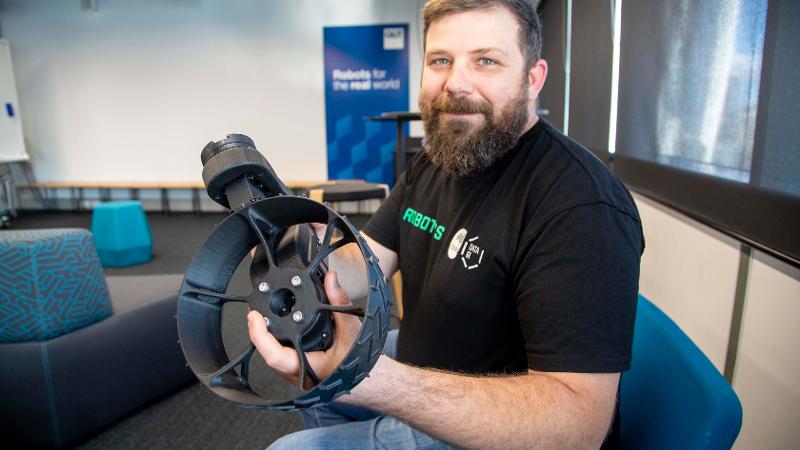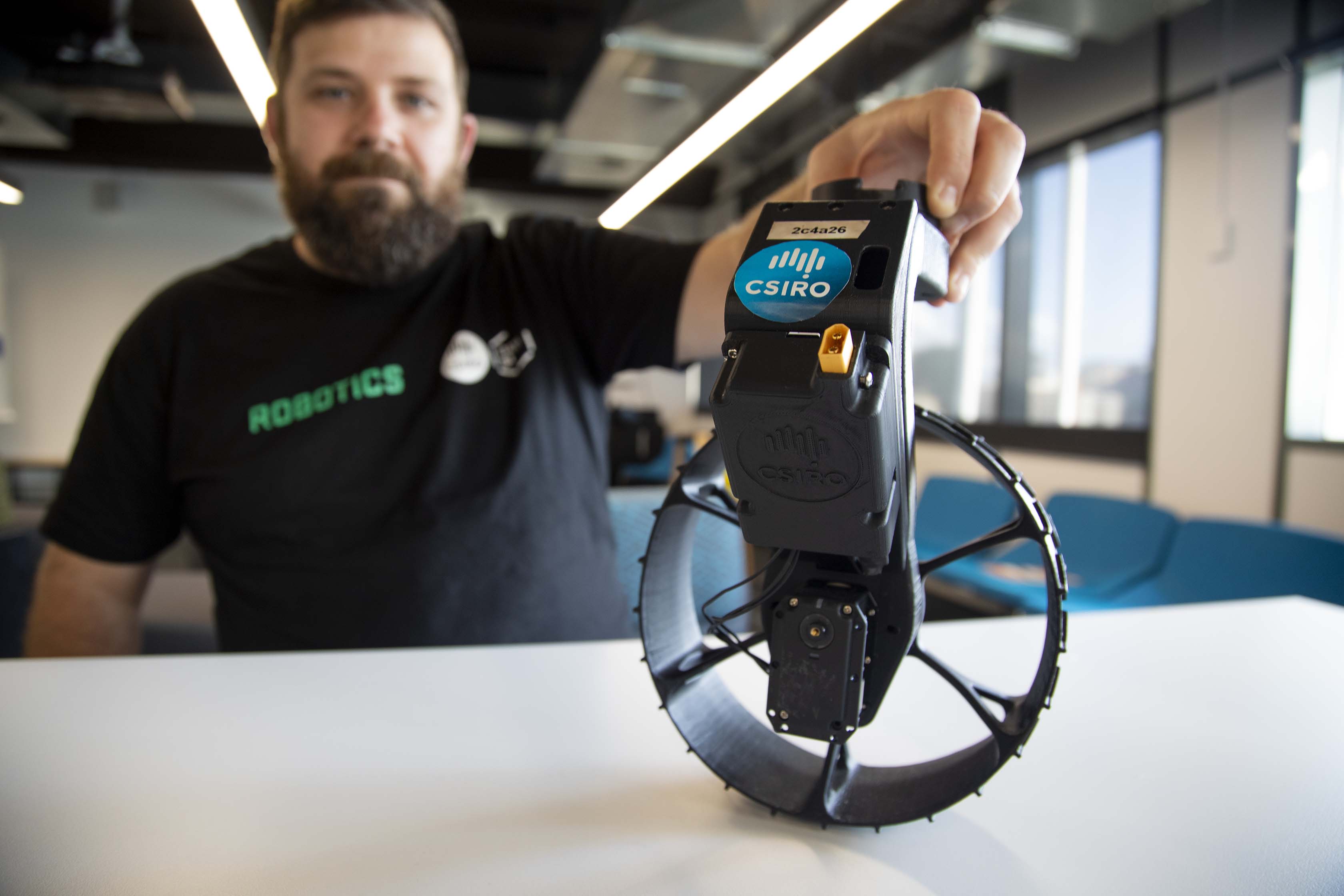
At 16 Troy Cordie left school to start a trade as a steel draftsperson, turning architectural and engineering drawings into fabrication plans, but a slow in work prompted a future-proofed career change.
Troy enrolled at QUT as a mature-aged student and found a love for robotics in his first year of undergraduate engineering studies.
Now, a PhD student, he is completing his thesis in modular field robotics working on NeWheel (pronounced ‘any wheel’) with CSIRO Data61 under the supervision of Dr Tirthankar Bandyopadhyay and world-renowned QUT roboticist Professor Jonathan Roberts.
NeWheel modules are self-contained, two-degree-of-freedom robot wheels capable of individual operation or collaborative work.
Each wheel can achieve a desired velocity and steering angle with the use of onboard motors, a battery and computing.
“My field of research is modular field robotics, specifically the creation of bespoke robots that make working with robotics simpler – so you don't need to be an engineer,” Troy said.
“The goal is to make robots more accessible and customisable.”
Troy demonstrated an operational NeWheel at Robotronica 2019 – QUT’s free robotics festival at the Gardens Point campus.

A modular field robot is created from a group of independently working modules as opposed to a robot designed for the specific task.
Troy works specifically on the controller – the computer power that governs direction and speed. He investigates ways to join robot modules to allow them to communicate with each other and operate collaboratively in the field, as well as solutions that allow the platform to be reconfigured in the field.
“The controller is told how fast the robot needs to move then works out how fast each of the wheels should move and gives those separate commands,” Troy said.
The key difference between a modular robot built by NeWheels and an all-wheel drive car is that each wheel has its own motor, says Troy.
“Also, we can change the shape and number of wheels. I’m yet to see a car that can do that.
“The big advantage is that this allows us to create custom robots to fulfil existing tasks, or it allows us to create custom robots in the field.
“If we arrive somewhere and the robot we had in mind doesn't work – modules allow us to customise the robot quickly to overcome challenges.
“Or, it allows us, in some examples, to customise existing infrastructure – such as trollies.
“You could connect the set of wheels and have the trolley drive itself.”
The NeWheel concept grew out of an interest in looking for unconventional modes of locomotion, and Troy would like to see an industrial NeWheel adopted.
“I think robotics has the potential to be really assistive.
“There are lots of jobs where people get injured pushing heavy trolleys and carrying heavy objects. So, I think robotics has the ability to remove people from dangerous jobs.”
Logistics within factory settings is one area of potential application but Troy says any task which put a human in danger could be a candidate for modular robotics, including search and rescue, and extra-terrestrial missions.
“We've recently looked at using modular wheels for extra-terrestrial rover-type missions,” Troy said.
“Some of the inherent robustness that you get through modularity could be used to prolong the life of a rover through adapting its control and its mode of operation to failures within the robot.
“Each wheel has two motors. If we had a steering motor failure we could adapt the rest of the platform so none of its manoeuvres would require the failed wheel to steer.
“If there's enough redundancy already within the system, you can potentially just abandon a module and adapt the controller to work with fewer wheels, which is something that a standard robot can’t do.”
Read more about Troy and the NeWheel in our long-form story on Medium (The LABS) - https://medium.com/@QUTSciEng/troy-is-going-places-with-newheels-5e5c115a6692
